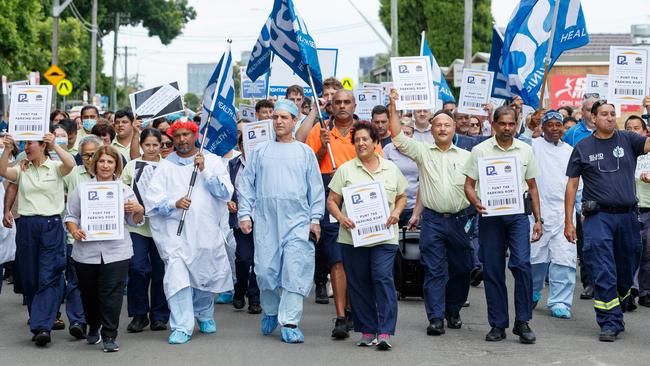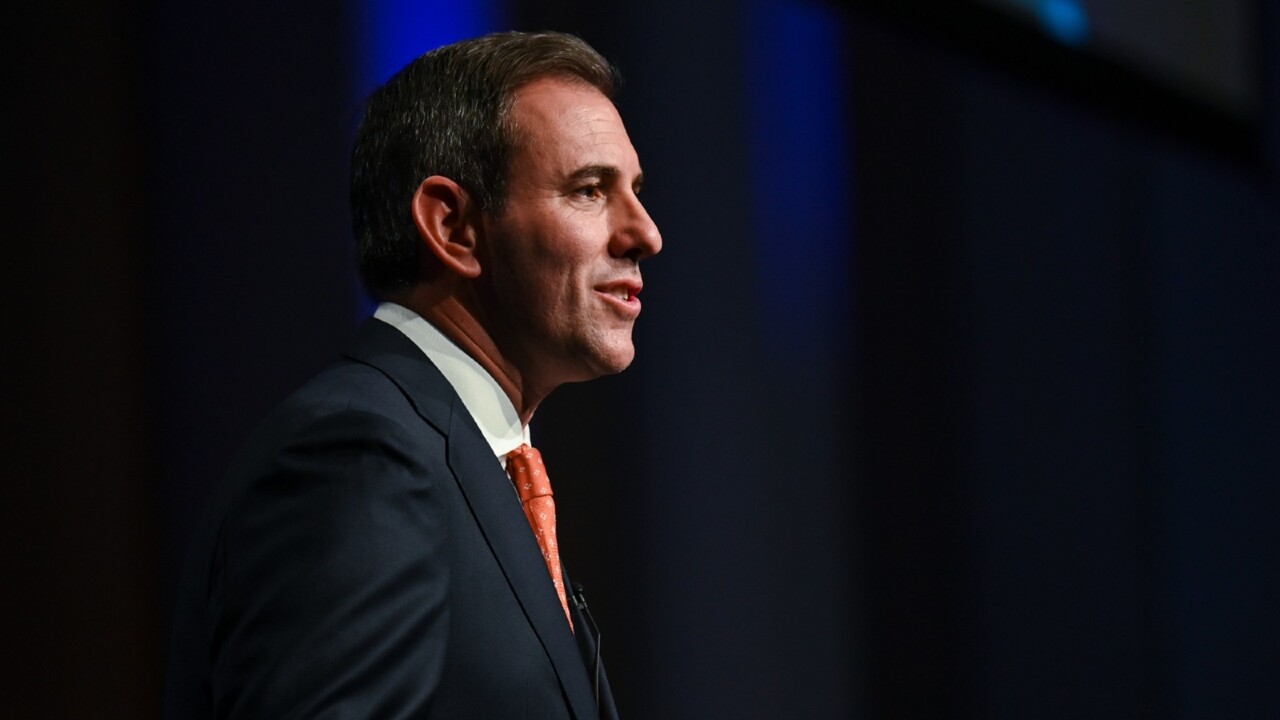Warning from business on wage surge: we’ll all pay
Wages growth accelerated to a 15-year high through 2023, sparking fears that the rises are ‘not sustainable’, given the nation’s abject productivity performance.

Wages growth accelerated to a 15-year high through 2023, bringing an end to nearly three years of real pay cuts for workers but sparking fears among employers and economists that the rises are “not sustainable”, given the nation’s abject productivity performance.
Pay rates lifted by 4.2 per cent in the year to December, just overtaking inflation at 4.1 per cent, as generous state deals for essential workers such as nurses and teachers in NSW and Queensland handed some public employees their biggest wage rises on record.
Wages growth has more than tripled from its Covid low of 1.3 per cent at the end of 2020, the figures from the Australian Bureau of Statistics showed, and is far higher than the annual average of 2.7 per cent in the decade leading up to the pandemic.
With Anthony Albanese killing off speculation of an early election by vowing to deliver another budget in March next year, business is warning the wages growth will be inflationary as Labor is not implementing productivity-enhancing reforms.
Jim Chalmers said real wages growth was “back in our economy”, with workers to be even better off under the revamped stage three tax cuts from July 1.
“What we’re seeing here is real wages growth returning ahead of schedule,” Dr Chalmers said.
“The Treasury was expecting real wages growth in 2024. What these numbers show is that we got real wages growth in 2023.
“What we’ve been able to do is we’ve been able to help inflation moderate, we’ve been able to help wages to grow. And by giving these cost-of-living tax cuts on the first of July, it means more help for more people with the cost-of-living pressures that are still hanging around.”

Innes Willox, the chief executive at national employer association Ai Group, said the hotter-than-anticipated wage figures were “a clear sign that inflationary pressures are far from over”.
Mr Willox warned that wages growing at their fastest pace in almost 15 years was not sustainable given current levels of productivity growth, echoing warnings earlier this month from Reserve Bank governor Michele Bullock.
He said Labor’s workplace reforms would make it more difficult to achieve productivity improvements in individual workplaces, “and they have opened up additional scope for wage increases unrelated to productivity improvements”.
“There is a real risk that the high wage increases we are now seeing in parts of the economy are the thin end of a very damaging wedge,” Mr Willox said.
As Dr Chalmers dismissed any talk of a “wage-price spiral”, ACTU secretary Sally McManus said unions welcomed “working people’s wages finally getting ahead after years of going backwards”.
“Wages are moving because of the hard work of Australian unions and the commitment by the Albanese government to seeing workers get ahead by backing minimum wage rises and passing new laws strengthening people’s rights at work,” Ms McManus said.
KPMG chief economist Brendan Rynne, however, said persistently high wages growth could come at the expense of jobs if pay rises were not matched with productivity gains. “A determining factor could be the wage dynamic that plays out between the public sector and private sector,” Dr Rynne said.
“If public sector wages kick up with no corresponding productivity gain and drag private sector wages higher as a consequence, then the likelihood is higher job losses than otherwise would have been the case.”

Analysts stuck to their forecasts for rate cuts later this year, but EY senior economist Paula Gadsby said: “There isn’t a lot of wriggle room for the Reserve Bank here as wages growth has now passed the forecast peak, ahead of time”.
While the RBA’s outlook relied on productivity growth returning to its long-run average after collapsing through the Covid pandemic, “there is no guarantee this will happen”, Ms Gadsby said.
“On top of this, domestic cost pressures and international factors remain a risk for inflation staying above the 2 to 3 per cent target band. This means we’re not completely out of the woods just yet,” she added.
The ABS figures showed wage growth in the health care and social assistance industry jumped by 5.5 per cent through 2023 – the most since records began in 1998. Rates of pay for public servants lifted by 1.3 per cent in the final quarter of 2023, with the annual pace accelerating to 4.2 per cent, from 3.5 per cent in the year to September.
Private sector pay growth eased to 4.2 per cent, from 4.3 per cent.
Only 16 per cent of private sector jobs achieved a wage increase in the final three months of 2023, compared with 38 per cent of public sector jobs.
The public sector contributed about one third of the increase in wages for the December quarter, the ABS data showed – an unusually high level.
Essential workers in Queensland and NSW were the big winners under new enterprise agreements negotiated at the end of last year, with state governments providing pay increases of 4 per cent and 4.5 per cent, respectively.
Additional top-up payments from cost-of-living adjustments in Queensland pushed public sector wage growth even higher to 5.4 per cent in the year, while teachers in NSW enjoyed historic pay rises, the ABS said.
ABS head of prices statistics Michelle Marquardt said: “Higher growth in the public sector was primarily due to newly implemented enterprise agreements for essential workers in the health care and social assistance, and education and training industries following changes to state-based wages policies.”








To join the conversation, please log in. Don't have an account? Register
Join the conversation, you are commenting as Logout